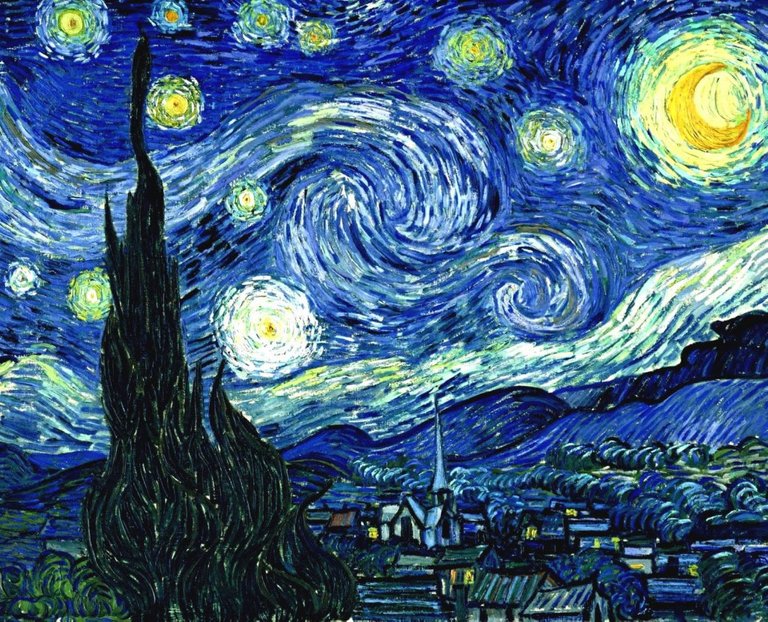The history of humanity has been represented through texts and articles that document the passage of time and the changes that occur in all parts of the world. Both our progress and our declines have been documented and studied to grow as a society, and art is no exception. In painting, for example, you can see the changes of time, power struggles, new ways of thinking and even new ways of seeing the world. We present here ten of the most transcendental works of history either for what they represent, for what they hide or for the impact they have had on humanity
Mona Lisa, Leonardo da Vinci
Also known as La Gioconda, it is one of the best known works of the Italian artist Leonardo da Vinci and one of the most visited in the world. It is a great example of the technique of chiaroscuro and hypnotized by the enigmatic smile of the lady portrayed. Currently exhibited at the Louvre Museum in Paris

The Last Supper, Leonardo da Vinci
This painting by da Vinci is the representation of the Last Supper, narrated in the Gospel of Saint John. It is a key work of the Renaissance and a whole treaty of perspective. The Last Supper is painted in oil on plaster, a technique not used before in mural painting, so its restoration has been a complicated process. Today it is located in The Church of Santa
Maria delle Grazie.

Guernica, Pablo Picasso
Guernica is probably one of the most transcendental works of the painter Pablo Picasso and equally one of the most impressive for the theme he plays. Through this creation, Picasso illustrates the tragedy of the bombing of the city of Guernica during the Spanish Civil War, so it has become one of the most prominent symbols against the war. Currently it is exhibited at the Reina Sofía National Art Center Museum in Madrid, Spain.

Las Meninas, Diego Velázquez
Las Meninas is considered the masterpiece of Diego Velázquez, the Spanish artist of the Golden Age. This oil on canvas of 1656 is the largest format made by Velázquez. With a composition in planes, that the artist manages to represent by means of the different entrances of illumination, it shows a daily scene of the court of Felipe IV. In it the limits between painting and reality are blurred and unprecedented time is suspended and the artist himself appears within the work. Currently it is exhibited in the Prado Museum.

The Starry Night, Vincent Van Gogh
This work, by the famous post-impressionist painter, is a night view from the Saint Rémy sanatorium, where Van Gogh lived a few months before his death. The impasto technique is used by the artist to show a restless and vibrant night, by contrasting the intense yellow with blue fillings. It is exhibited at the Museum of Modern Art in New York.

The Scream, Edvard Munch
This work by the Dutch artist Edvard Munch is an example of expressionist painting, where the landscape joins the feeling of the protagonist. With a distorted face, the environment seems to echo its expression, which contrasts with an orange background, where two figures seem to move away without noticing the emotional whirlwind that the work expresses. It has several versions, the first, exhibited in 1893, is in the National Gallery of Oslo.

Sistine Chapel, Michelangelo
Commissioned by Pope Julius II, the vault of the Sistine Chapel is a unique work of Michelangelo Bonarotti who made this great work without being properly considered a painter. In the nine central boxes an iconographic program of the stories of Genesis is shown, from the creation, the fall of man, the flood and the rebirth of humanity with the Ark of Noah. On the columns, he painted five Sibyls and seven Prophets. Later Pope Clement VII of Medicci commissioned him to paint the altar wall with the Universal Judgment.

Water Lilies, Monet
In the basement of the Museum de l'Orangerie there are the famous Monet Water Lilies. It was dedicated by the painter to France as a symbol of peace, after the signing of the Armistice of 1918. It is called "The Sistine" of Impressionism. It shows lilies in the water, roots and the reflection of trees and clouds giving the illusion

Bicycle Wheel, Marcel Duchamp
The Bicycle Wheel is the first ready - made by Marcel Duchamp, a series of objects that he created to challenge the suppositions that constitute a work of art. In this ready - made Duchamp, it combines two pieces of mass production, a bicycle wheel and a stool, to create a machine without any functionality. With this in mind, Duchamp continued to select prefabricated objects and call them art, actions that changed the viewer's experience and the perspective of what art is. It is currently exhibited at the Museum of Modern Art in New York.
